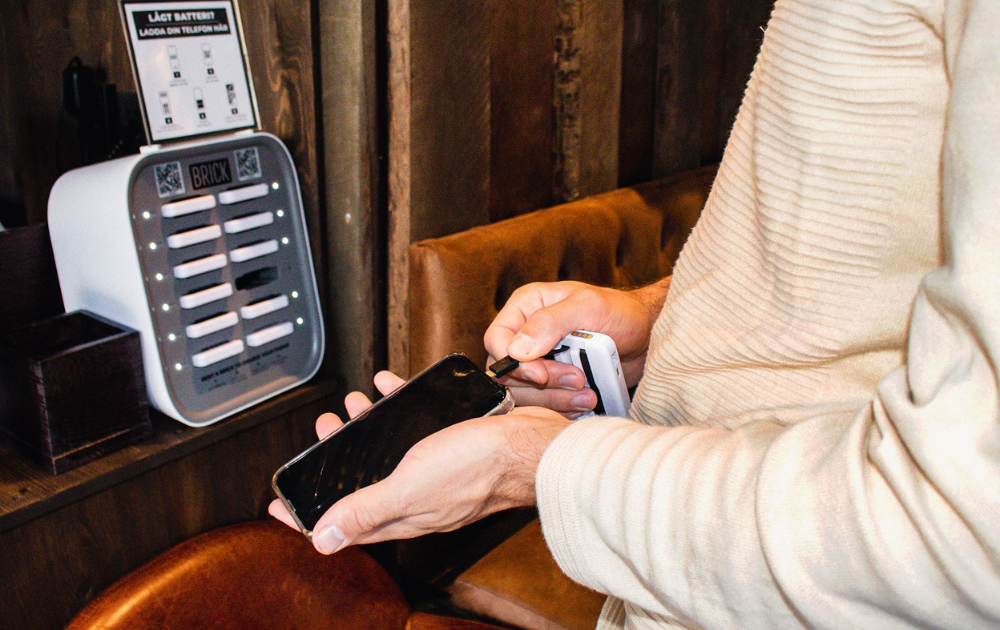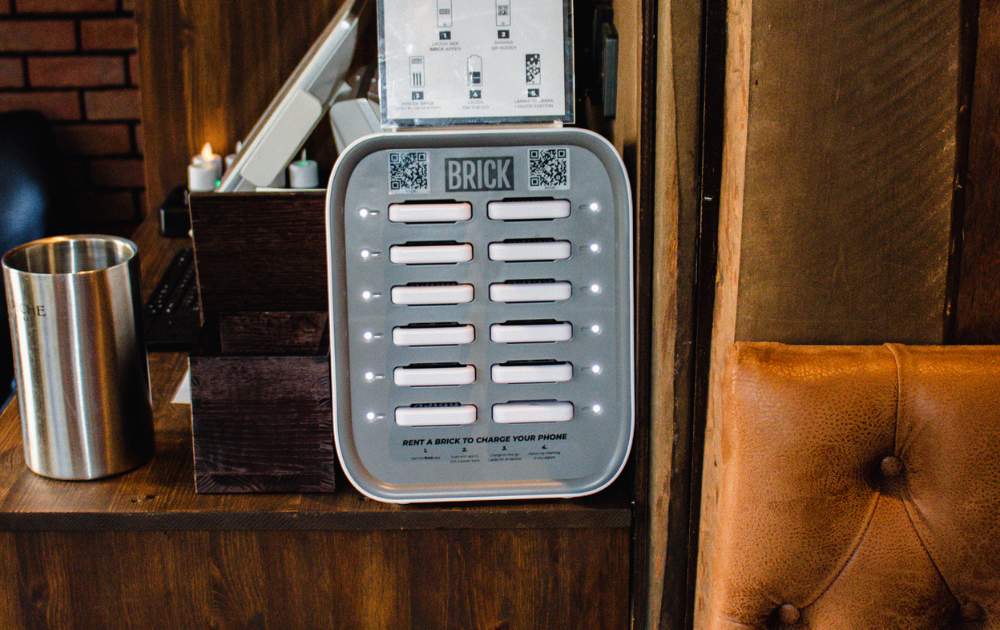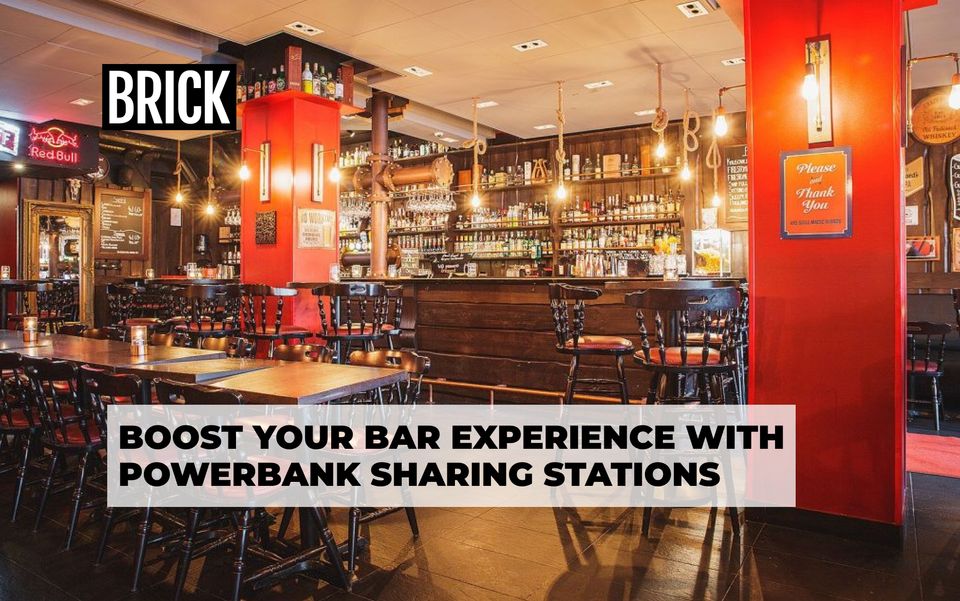Powerbank Sharing 101: The Components, History, and Statistics
Powerbank sharing, the communal utilization of powerbanks, is the possibility to rent a powerbank from a powerbank station, charge your device on-the-go, and return it to any station available. It’s an easy and convenient solution for those who don’t always have a charger at hand.

Introduction:
Powerbank sharing, the communal utilization of powerbanks, is the possibility to rent a powerbank from a powerbank station, charge your device on the go, and return it to any station available. It’s an easy and convenient solution for those who don’t always have a charger at hand.
The powerbank sharing industry has several key components that make this service possible: the hardware (powerbanks, powerbank stations) and software (back-end and applications). The industry took off after it was first introduced at the Las Vegas International Consumer Electronics Show in 2001. This industry has an expected market revenue of 15.2 billion US dollars by 2027, we can expect more powerbank stations popping up in locations all around us.
What is Powerbank Sharing?
Powerbank sharing is a handy solution for anyone who needs to charge their phone while out and about. With this service, you can rent a powerbank at a powerbank charging station and return it once your phone is fully charged. It’s an affordable and innovative way to charge your phone when you don’t have your own charger with you.
Renting a powerbank is a quick and easy process. To rent a powerbank, all you need is a smartphone and a payment method. Most powerbank sharing companies have similar renting processes. Powerbank stations usually have a QR code sticker on them, which users can scan with their smartphones to rent a powerbank. After charging, users can return the powerbank to the station.
At Brick, our renting process works as described above. Users download our app, or use a web browser without downloading an app. Once they’ve completed the first two steps, they can find the nearest Brick station through the app and start charging! Scan the QR code to eject a powerbank and connect the powerbank to your device by pressing the “power-on” button. When done charging, the user can return the powerbank to any Brick station to end the rental.
The Origin behind powerbanks
Why were powerbanks invented?
Powerbanks started with a Chinese company called Pisen. They created the very first powerbank, which consisted of two AA batteries. Interestingly, the powerbank was coined down because an Antarctic expedition team was struggling to keep their devices powered up in the cold weather. The low temperature drained their batteries, and Pisen saw an opportunity to solve this problem with their powerbank invention.
Fast forward to 2001, the powerbank was introduced to the world at the Las Vegas International Consumer Electronics Show. Though big and bulky, it was a groundbreaking invention that would change the way we charge our devices.
Seeing how far powerbank technology has come since those early days is pretty amazing. Today, some powerbanks are smaller and sleeker, making them a much more convenient option.

What makes Powerbank Sharing possible?
Fundamental components in powerbank sharing
The Powerbank stations - The powerbanks are inserted in the station, and the number of powerbanks depends on the size of the station. The user rents a powerbank by scanning the QR code on the powerbank station
The powerbank stations have SIM cards inserted for reliable communication with servers, so they can eject a powerbank when a user scans the QR code. Without connectivity, renting would be impossible. The SIM cards also enable companies and users to keep track of their rentals, including the duration and cost of the rental.
The Powerbank - Powerbank sharing relies on the powerbank itself. These handy devices come pre-charged and ready to use, and can be effortlessly charged by popping them into the powerbank charging station. This means you can forget about your phone running out of battery. Once you take the powerbank out of the station, it’s fully charged and ready to use. When you’re done using it, simply return it to the station where it will automatically start charging again, ready for the next person to use.
Software - The software serves as the backbone of powerbank sharing. It acts as an admin panel that allows the company to efficiently manage its powerbank sharing business. This includes monitoring statistics, detecting any broken powerbanks, stations that require repair, and accessing necessary data for growth and development.
Application - An app allows users to locate the powerbank charging stations and see how many powerbanks are available for rent. Without an app, users wouldn’t have the convenience of finding stations efficiently. Once the user is done charging, they can find the nearest powerbank station in the app. The app also keeps track of the user’s rental history, showing how long the rental lasted and how much it cost.

What contributed to powerbank-sharing?
Lithium batteries
Lithium-ion and lithium-polymer batteries are the most common types of batteries used in powerbanks. Lithium-ion batteries can store a lot of energy in a packed space, and are affordable to manufacture. They are light as they weigh only a third of lead-acid batteries, and many companies are using them in their products. They cannot be thrown away in the trash and must be taken to a certified battery recycler!
Lithium-polymer (Li-poly) batteries are a different type of rechargeable lithium-ion battery. They can store higher amounts of energy, and thus more expensive to manufacture. Plus, they don’t age as quickly as other batteries. Li-poly batteries are also highly sought after due to their compact size, lightweight design, and rechargeability. So if you’re looking for a reliable and long-lasting battery option, Li-poly batteries might be a great choice!
Shared rechargeable batteries, powered by lithium-ion and lithium-polymer technology, have become popular in powerbank sharing due to their rechargeability and effectiveness. This concept has influenced various industries, including public transport hubs and large retail centers, since March 2017.
However, some small companies in China withdrew from the industry in 2017, leading to a cooling-off period for the Chinese market. Today, online a few large-scale businesses like Meituan and Guaishou hold 96% of the Chinese market.
Powerbank sharing trends and opportunities
The demand for portable devices: We live in a society filled with developed IoT devices. Though the usage of electronic devices is expanding and the battery evolution is not growing simultaneously, the need for charging will increase, hence a market possibility for powerbank sharing. Since more devices leads to a greater possibility of users renting a powerbank.
The rise of outdoor activities:. Lately, outdoor activities have increased in popularity. More people are hiking, camping and biking, and they are looking for durable powerbanks that can be used on-the-go.
Technological improvements: The advancements in next generation batteries and solid-state batteries could improve powerbank quality in regards to its performance, charging time and capacity. This means that the improvements and advancements could match up with the modern device demand.
Sustainability - There’s a thriving focus on sustainability in modern society. Consumers are nowadays looking for more sustainable options and powerbanks incorporated with renewable energy sources can therefore increase in demand.

Current Statistics on Powerbank Sharing
The power bank market revenue
According to Statista, the global power bank market revenue reached 9.9 billion US dollars in 2021. It’s expected to continue growing and reach 15.2 billion US dollars by 2027. That’s almost double its revenue in just six years!
The global power bank rental services market
According to Spherical Insights, the global power bank rental market was valued at 7.1 billion US dollars in 2021, and it is expected to grow rapidly, reaching a value of 15.9 billion US dollars by 2030. This represents a growth rate of 13.5 over the forecast period. The study covers data from 2017 to 2020 and analyzes segments such as application, end user, region, type and COVID-19 impact.
The report highlights two main factors driving the growth of the power bank rental market: the increasing adoption of sharing economy and digital solutions, and the growing use of smartphones. As a result, power bank rental companies have experienced significant growth in recent years, which reflects the public’s interest in power bank rental services.
Generation Z and Millennials are the primary consumers of power bank rental services due to their high usage of smart devices and smartphones. The growing usage of the internet and the deficient battery capacity of different smartphones are also driving factors for power bank sales.
Innovate with a powerbank-sharing solution!
Powerbank sharing has become a popular solution for anyone, rather than purchasing a powerbank. Powerbank-sharing offers a more accessible and alternative charging solution. The powerbank rental market has grown significantly in recent years and will continue to rapidly expand.
One of the driving forces behind the powerbank-sharing business model is the concept of sharing economy, which emphasizes sharing rather than buying. Additionally, trends such as the increasing demand for portable devices and the rise of outdoor activities have created opportunities for the powerbank-sharing market to grow.
Powerbank sharing is an innovative solution that makes charging your device quick, easy, and hassle-free. With the growth of the industry, we can expect to see more powerbank charging stations popping up in locations all around us. Here's one example of having a powerbank sharing station in a bar.
If you’re interested in learning more about our powerbank-sharing products or implementing a powerbank-sharing solution at your local venue, we’ve got plenty of information. Check out our website to discover more!




